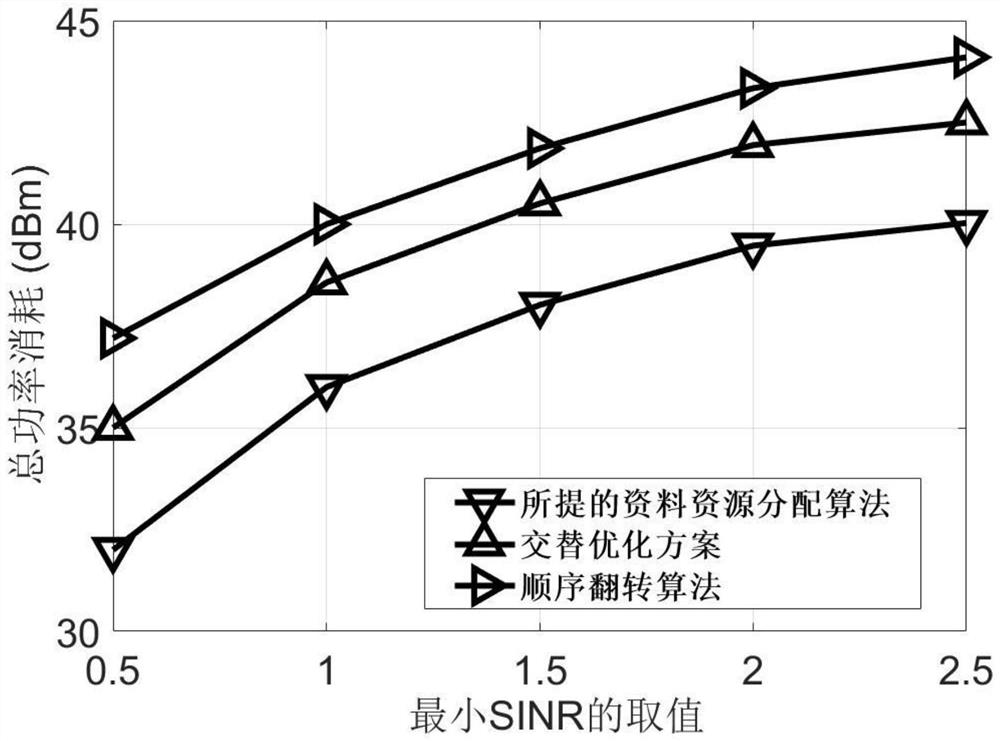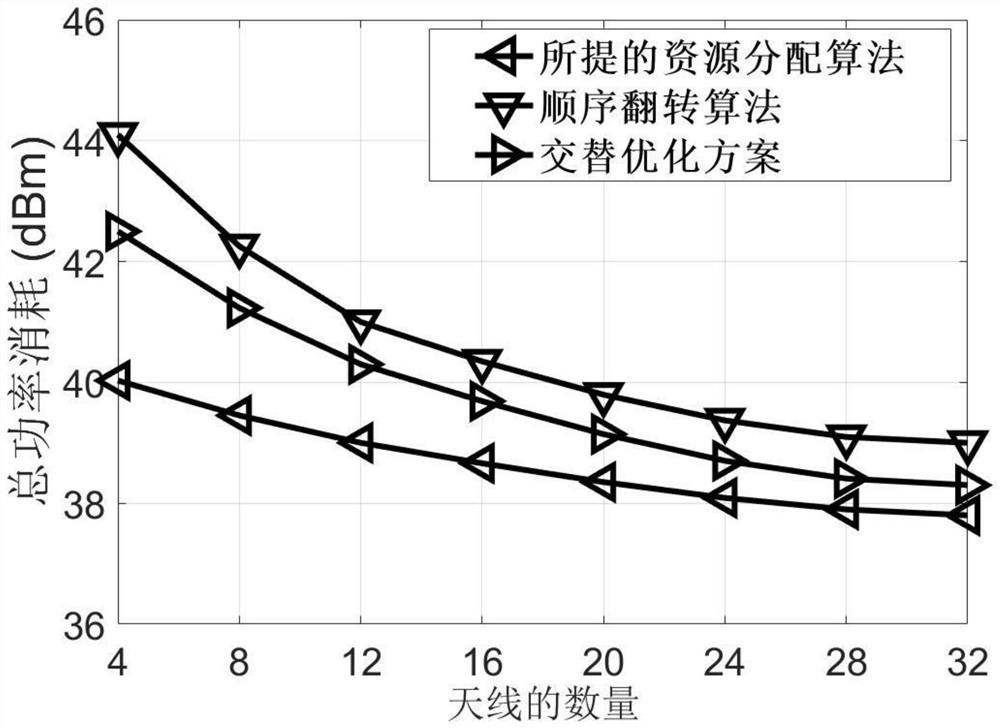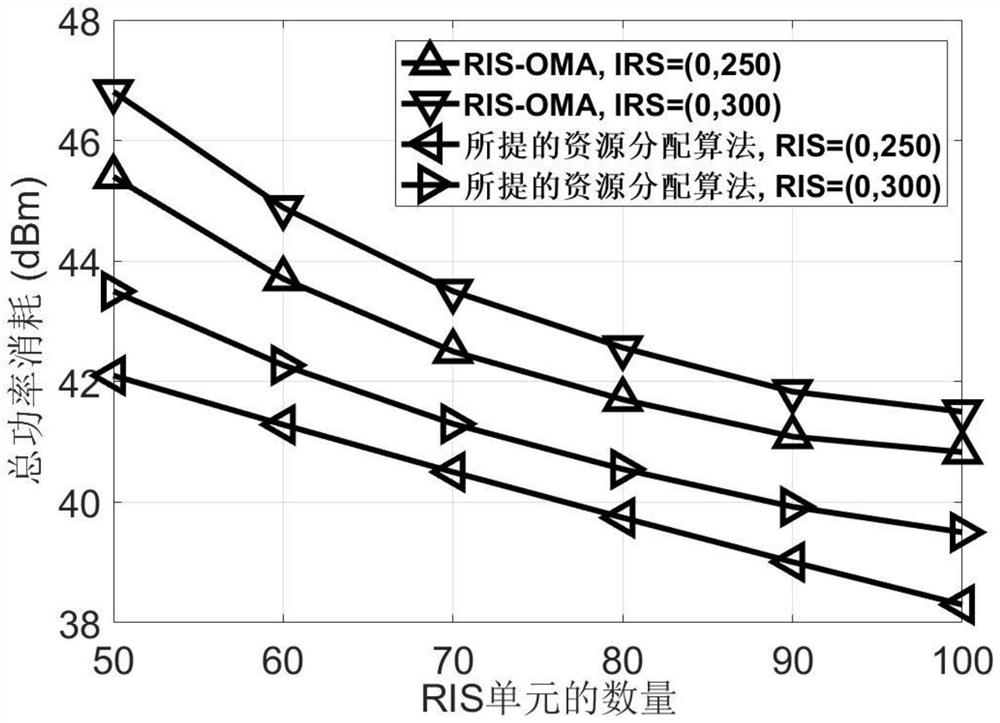Resource allocation method for RIS-assisted multi-unmanned aerial vehicle communication system
A multi-UAV and communication system technology, which is applied in the resource allocation field of RIS-assisted multi-UAV communication system, to achieve the effect of reducing energy consumption, improving spectrum efficiency, and enhancing signal coverage
- Summary
- Abstract
- Description
- Claims
- Application Information
AI Technical Summary
Problems solved by technology
Method used
Image
Examples
Embodiment
[0090] A resource allocation method for RIS-assisted multi-UAV communication system, such as Figure 5 shown, including the following steps:
[0091] S1. Introduce the intelligent reflector into the multi-UAV-assisted non-orthogonal multiple access system, and construct the intelligent reflector-assisted multi-UAV communication system;
[0092] The details of the intelligent reflector-assisted multi-UAV communication system are as follows:
[0093] K four-rotor UAVs provide wireless communication services for K user groups, and each user group includes multiple users; the kth UAV serves the kth user group In this embodiment, K=2;
[0094] In this embodiment, all UAVs are equipped with N t = 32 antennas, and each user has 1 antenna;
[0095] Since the direct path between the drone and the user is blocked by obstacles, an intelligent reflective surface device with N=100 reflective units is deployed on the surface of the building to reflect the signal transmitted from the dron...
Embodiment 2
[0165] In this embodiment, a simulation effect diagram of a resource allocation method for a RIS-assisted multi-UAV communication system is as follows figure 2 shown.
[0166] figure 2 The other parameters are: the minimum transmission rate threshold ξ=1.5, the number of reflection units N=100, the number of antennas N t =4,8,...,32. In this example, the total power consumption of the present invention under different number of days is investigated. To show the performance gain, the power minimization scheme without considering the RIS and the power minimization scheme of the RIS-assisted UAV-OFDMA system are compared in this example. Among them, the minimum SINR value ξ is set to 1.5 and the number N of reflection units is set to 100. like figure 2 As shown, as the number of antennas increases, the total power consumption for all resource allocation schemes decreases. In fact, configuring a higher number of antennas on a UAV can achieve higher diversity gain to balan...
Embodiment 3
[0168] In this embodiment, a simulation effect diagram of a resource allocation method for a RIS-assisted multi-UAV communication system is as follows Figure 3-4 shown. Figure 3-4 The other parameters are: the minimum SINR and the number of antennas are ξ = 1.5 and N t = 32.
[0169] exist image 3 In this example, the total power consumption of the present invention under different numbers of RIS reflection units is studied. like image 3 As shown, the total power consumption of all resource allocation schemes decreases as the number of RIS reflection units increases. This is because the RIS optimization scheme proposed in the present invention can enhance the passive beamforming gain by controlling the phase shift coefficients of a large number of RIS reflection units, thereby reducing the system power consumption. In addition, in this embodiment, from image 3 It can be seen that the location of the RIS close to the UAV can significantly improve the performance gain...
PUM
 Login to View More
Login to View More Abstract
Description
Claims
Application Information
 Login to View More
Login to View More - Generate Ideas
- Intellectual Property
- Life Sciences
- Materials
- Tech Scout
- Unparalleled Data Quality
- Higher Quality Content
- 60% Fewer Hallucinations
Browse by: Latest US Patents, China's latest patents, Technical Efficacy Thesaurus, Application Domain, Technology Topic, Popular Technical Reports.
© 2025 PatSnap. All rights reserved.Legal|Privacy policy|Modern Slavery Act Transparency Statement|Sitemap|About US| Contact US: help@patsnap.com



